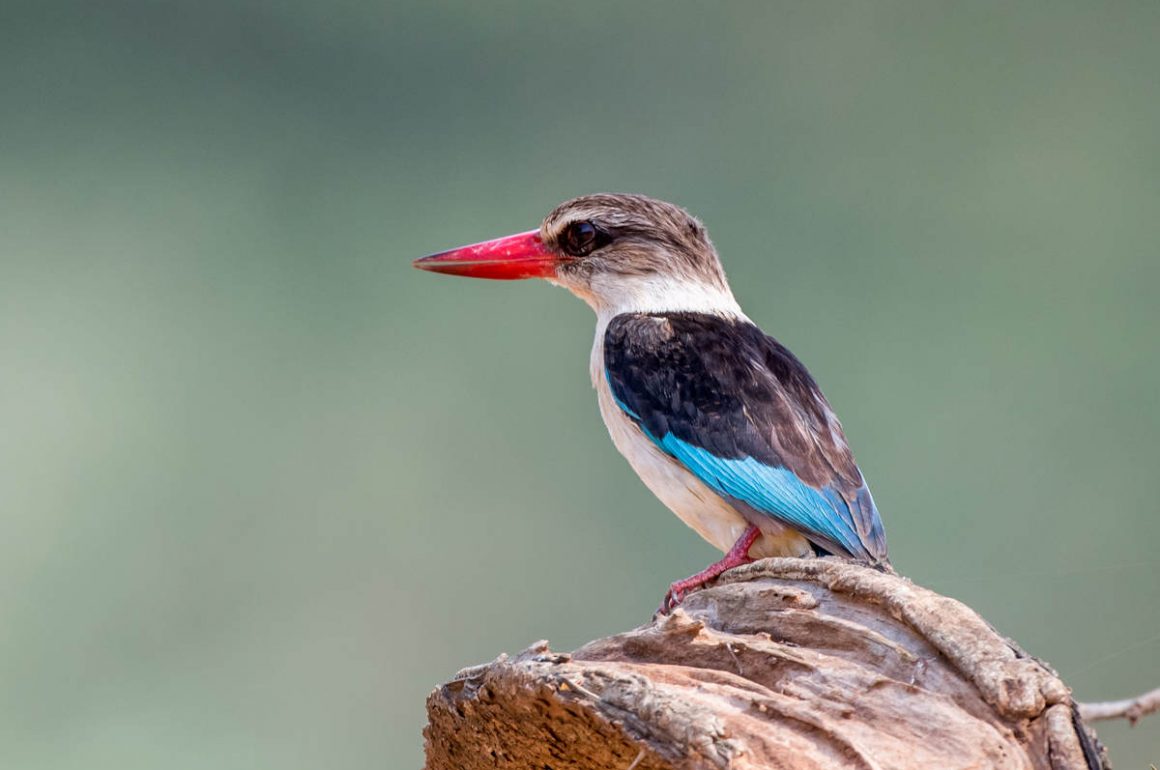
This is the last post covering my time birding the Kruger Park in November 2018.
It seems this African Harrier-Hawk just caught something here. No clue what it is though.
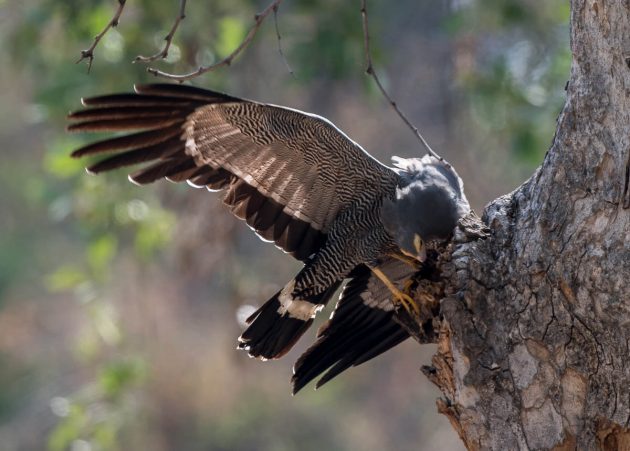
A study on the diet of the African Harrier-Hawk starts rather pompously:
“Feeding is an indispensable activity in the life of birds. It is crucial for their survival but the demands of food acquisition impose significant challenges to both the physiology and behavior of birds. Thus, this study on the feeding ecology of African Harrier-hawk is imperative for understanding the species adaptation to environments and also a crucial factor to be considered while examining their economic status.”
A more interesting piece of information than that birds need food is that “the African Harrier-Hawk is known to blush deep red in the face when they are taken by surprise, as well as during the courtship process” (source). I guess blushing is easier if you have a bald face like this species.
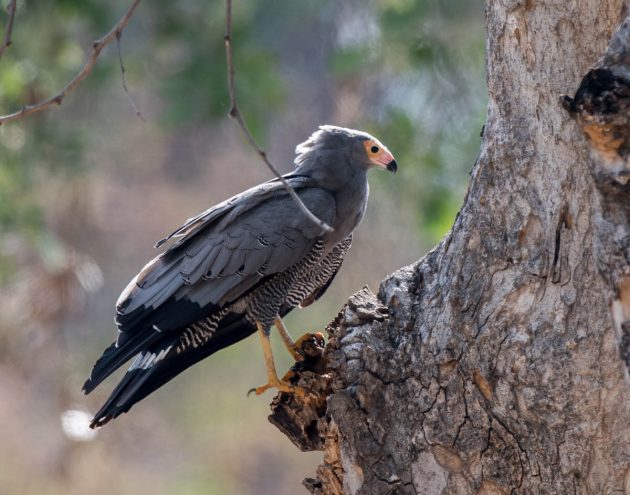
eBird seems quite fond of the Bearded Scrub-Robin, calling it a “pretty robin”.
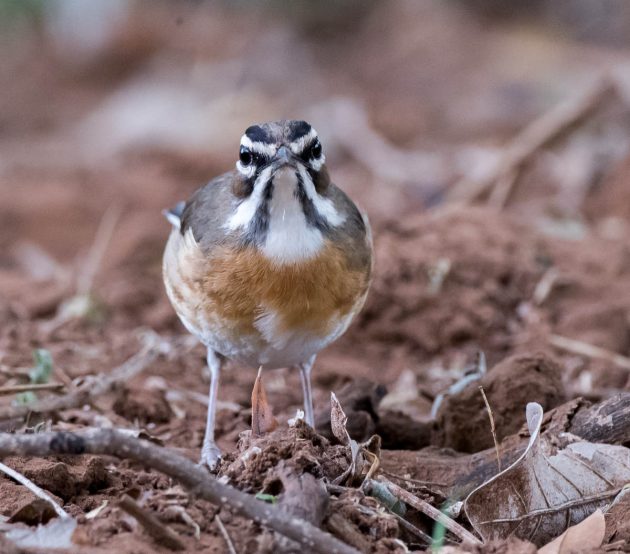
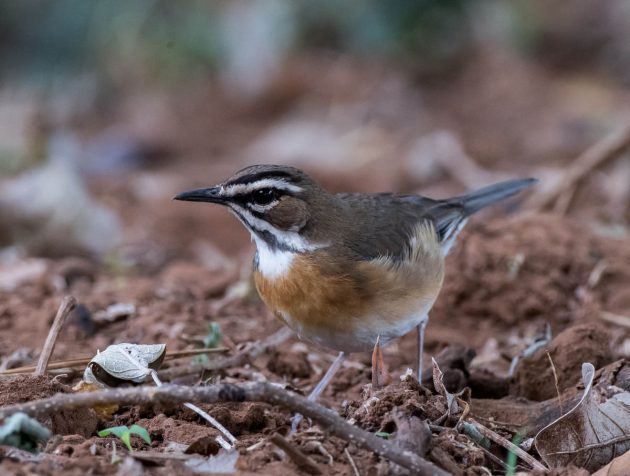
The Latin species name quadrivirgata means four-striped, and a quick count around the head of the bird makes this seem like a sensible name choice.
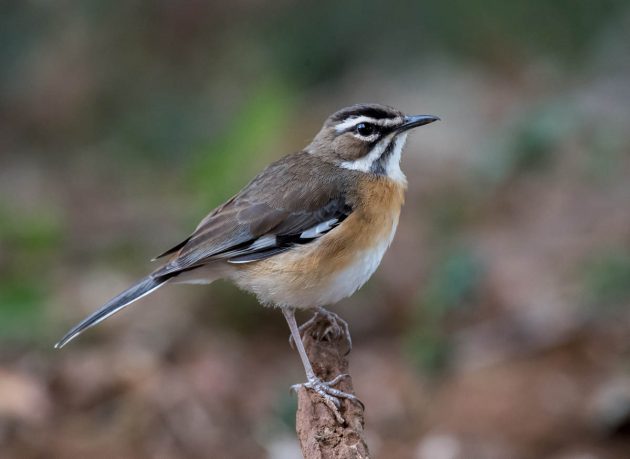
In a paper published in 1988, two Japanese biologists ask “Why does the Broad-billed Roller bring Strange Objects to the Nest?” (I like the way that the title is put in the form of a question – recommendable scientific marketing).
Spoiler alert: the following paragraph may give away the answer and thus make it less pleasurable to read the original paper. So, read it at your own peril.
“We suggest these objects function as ‘millstones’ used to grind up beetles (Coleoptera) and discuss the possibility that the use of ‘millstones’ may be found in birds specializing on prey with hard chitinous exoskeletons. Their potential role as tools used during the courtship displays of Broad-billed Rollers is also discussed.”
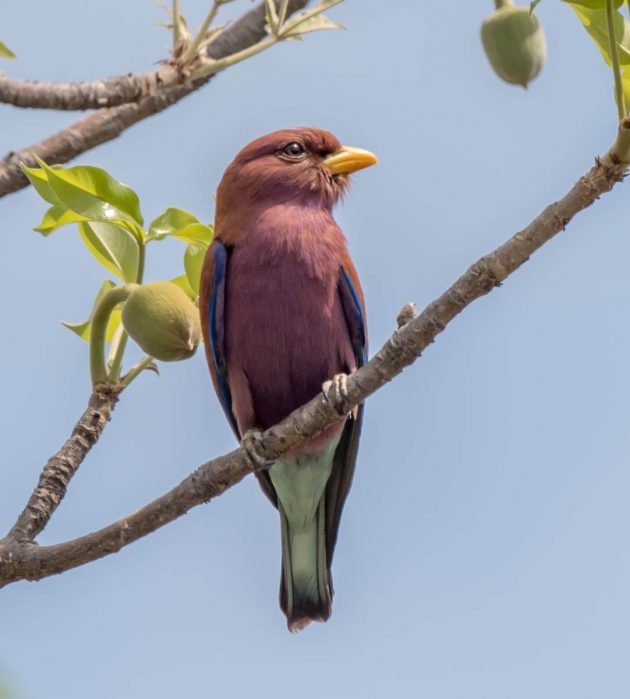
Meanwhile, the poor Black-headed Oriole is checked for its use as an arsenic indicator in a paper titled “Evaluation of Black-Headed Oriole as Bioindicator of Arsenic Contamination Using Atomic Absorption Spectrometry”.
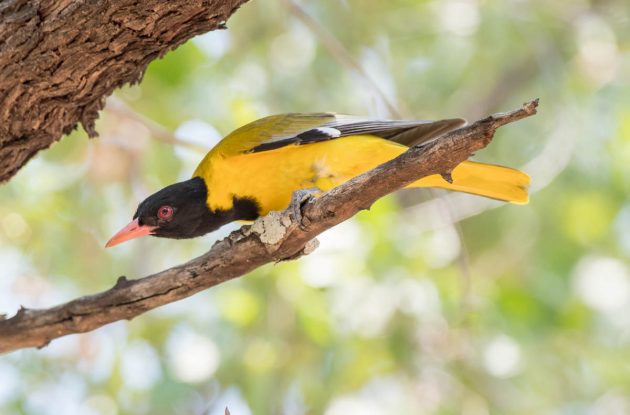
Presumably due to the great success of that paper, the authors followed it with another one titled “An investigation of chromium toxicity in the wild population of Black-Headed Oriole using atomic absorption spectrometry”. Never change a winning team.
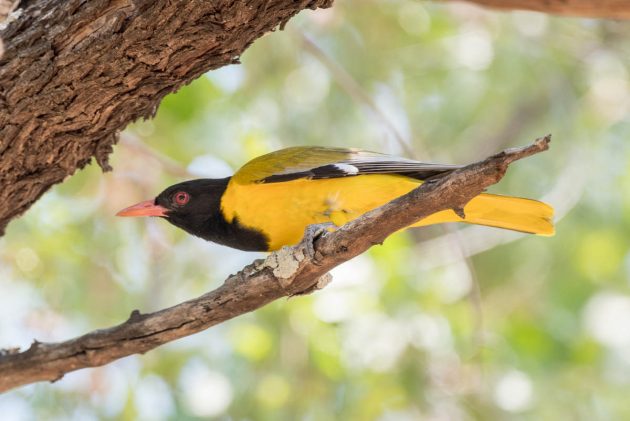
If you were an antique Roman reading this blog post, what you see below would not be a Brown-hooded Kingfisher but a white-bellied one (albiventris).
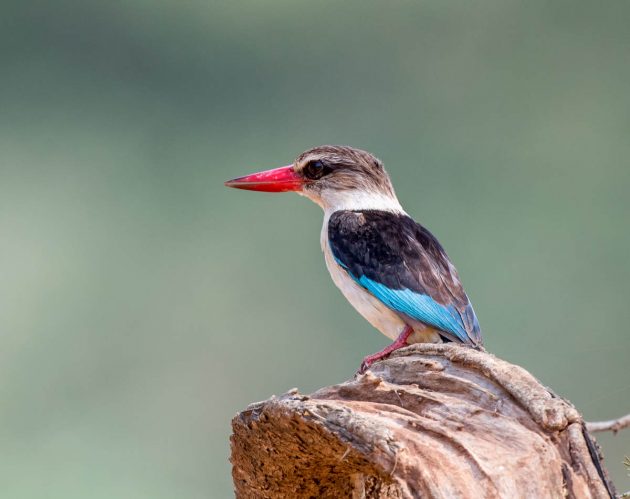
Among some other species of the kingfisher family, this species is a bit of a laughingstock. They tease the Brown-hooded Kingfisher by quoting a part of the HBW entry to it: “Rare attempts at fishing seldom successful.”
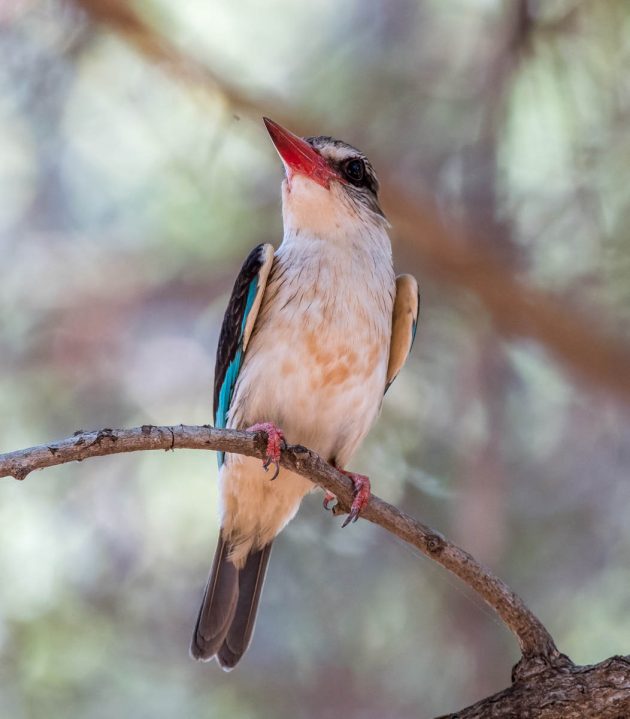
Instead, it mostly feeds on insects captured on the ground.
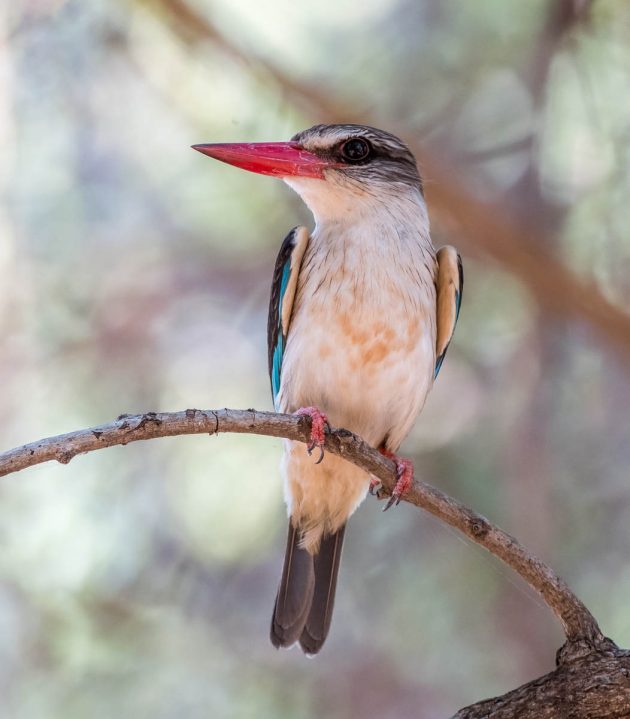
Another obstacle to pleasurable fishing is that the wet look does not work too well for this kingfisher, making the bird look rather disgruntled.
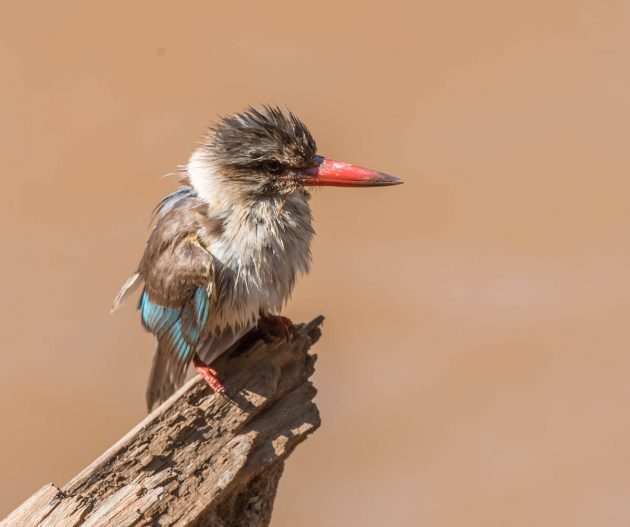
For some reason, the only version of the old English folk tune “Three Blind Mice” that I know is a reggae version by Max Romeo (I had a weed-smoking, reggae-loving friend at high school). Very likely you know other versions. Anyway, the vocalization of the Chinspot Batis is described as a “characteristic downslurred three-note ‘three-blind-mice’ call” on eBird.
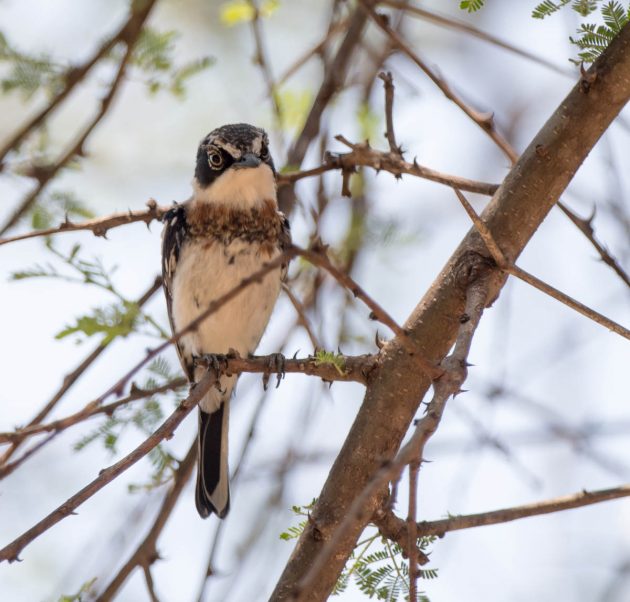
I am not actually sure whether this is a male or a female. It lacks the chestnut throat spot characteristic of the female, but the breast band is not as purely black as described for males. An immature male maybe?
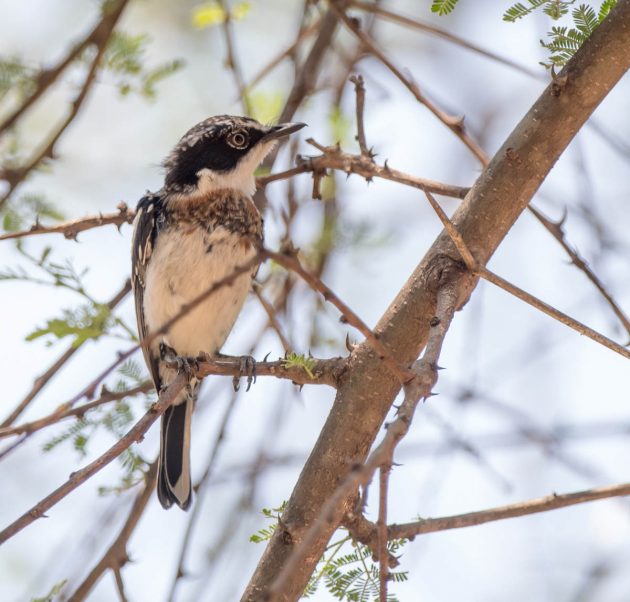
Common Scimitarbills seem to benefit from staying close to a flock of Social Pied Babblers. The babblers have a sentinel system – individual birds take turns scanning for predators and warning the group.
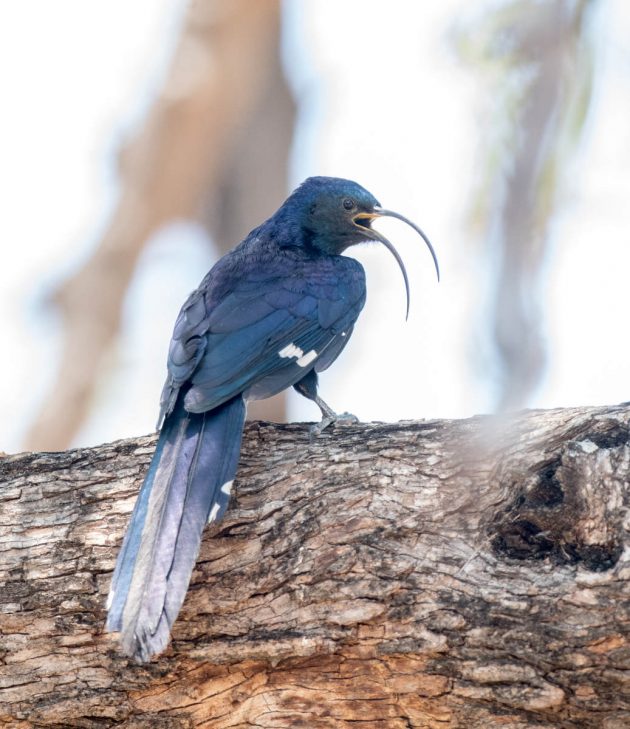
So, when Common Scimitarbills are in the presence of they babblers, they reduced their vigilance rate by over 60%, increased their foraging efficiency and moved into more open habitat. Presumably without even saying Thank-you to the babblers (source).
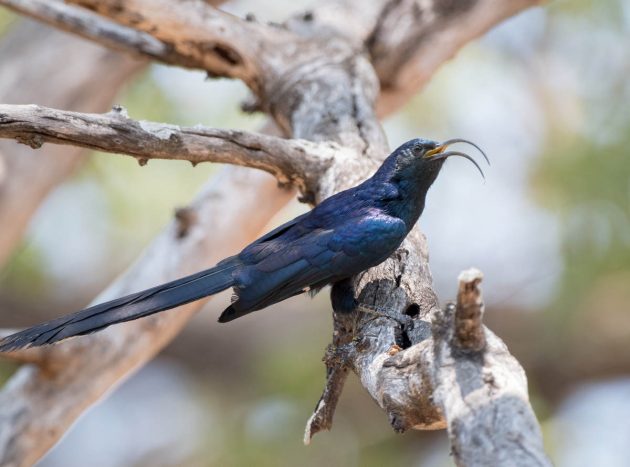
This is probably a Fork-tailed Drongo, as Wet Drongo is not a species name recognized by any of the relevant authorities.
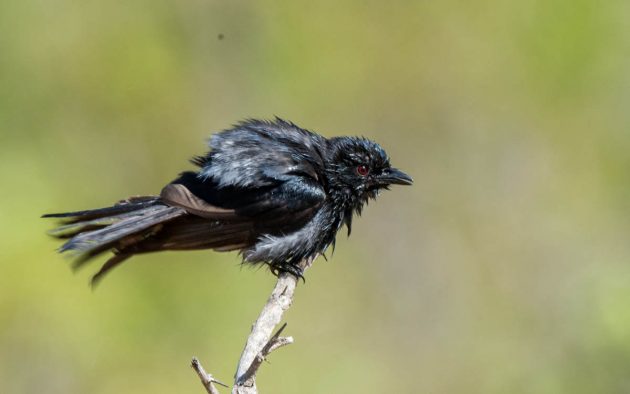
The website bird.com compares the Green Wood Hoopoe to football team supporters. The “birds live in groups of around twelve members and are known to challenge rival groups by means of raucous vocal displays, much like opposing football team supporters try to outdo one another in chanting and cheering for their team during a match. … These intense displays can continue for extended periods, with subordinates contributing more than dominants, until one group gives up and retreats. Unlike football fans though, following their defeat the group of Green Woodhoopoes don’t go off to the nearest pub to drown their sorrows, but rather engage in preening one another. Dominant birds focus on preening their subordinates in what is thought to be an encouragement to stand their ground in future conflicts.”
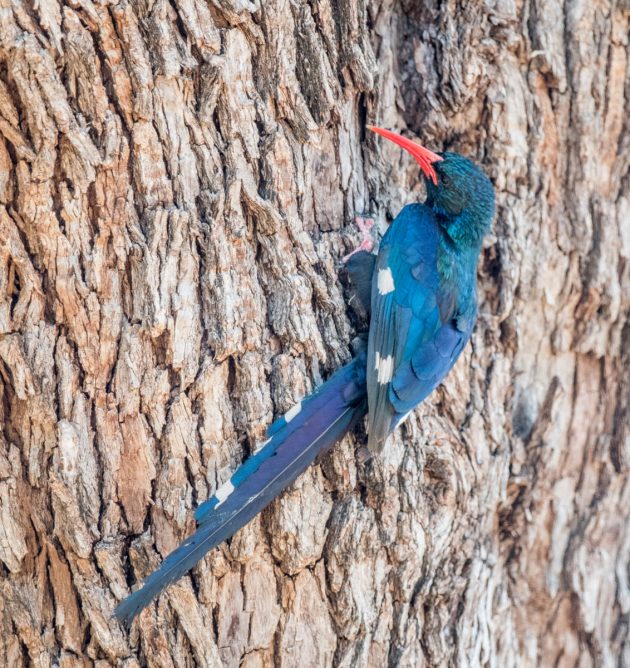
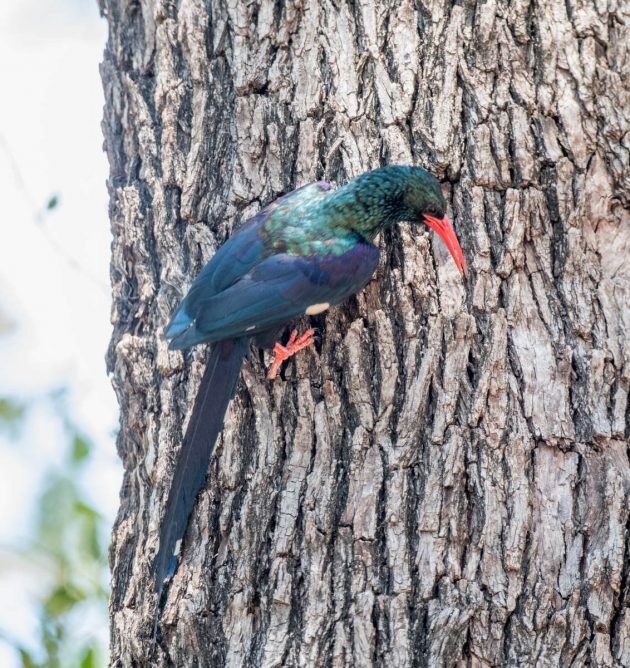
Another study cited in “Wired” states that “For The Green Wood Hoopoe, Middle-Aged Motherhood Is Best”, providing the rationale that “females that attempt to start breeding early in life have a very high mortality rate.” They call the finding surprising, citing “a basic tenet of behavioral ecology: that early breeding is best”. This in turn I find somewhat surprising as at least for humans, early pregnancies are regarded as a risk, with the WHO stating that “adolescent mothers (ages 10–19 years) face higher risks of eclampsia, puerperal endometritis, and systemic infections than women aged 20 to 24 years”.
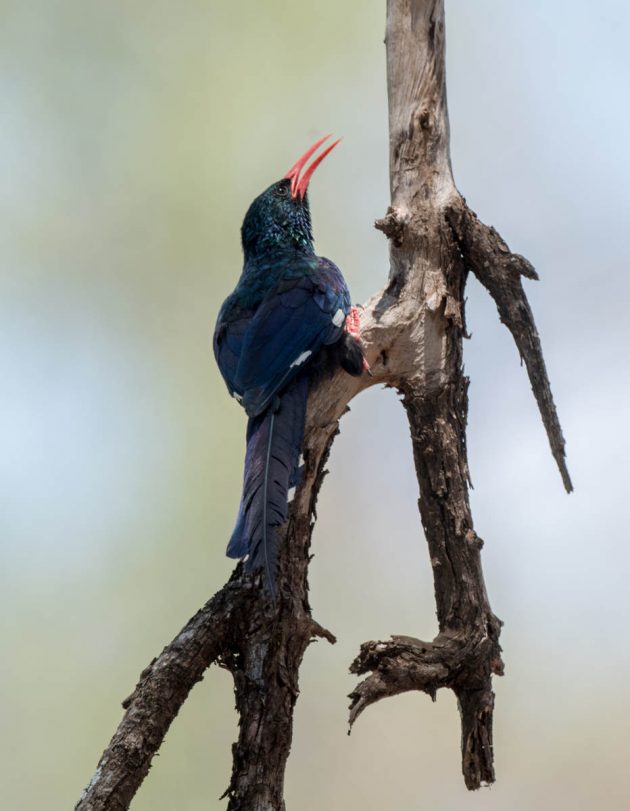
And yes, I am aware that there is a difference between Green Wood Hoopoes and humans. Thanks for pointing it out though.
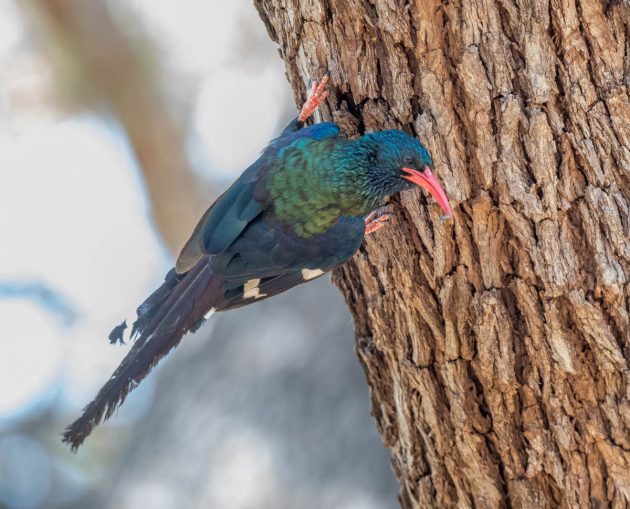
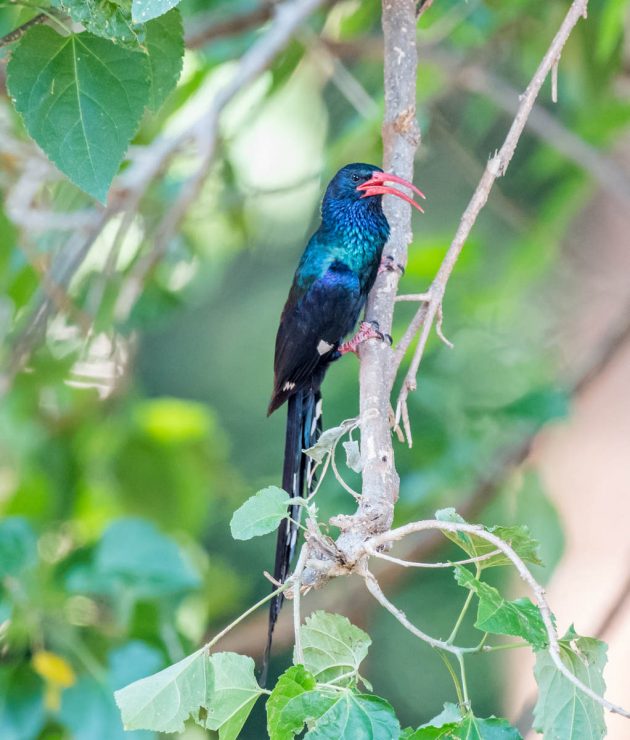
The Hadeda Ibis is apparently spreading in South Africa and even thriving in places like Johannesburg, living at least partly on dog food. So, no real need to go to Pafuri to see it.
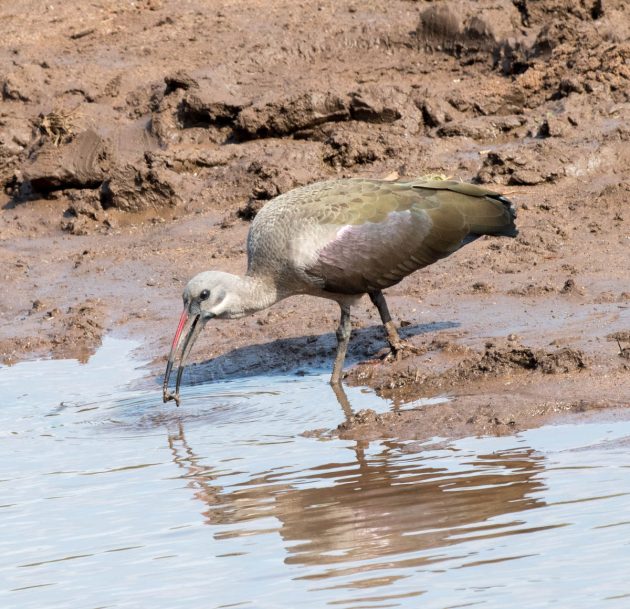
Because of its cry, it is apparently sometimes called a “flying vuvuzela” – not exactly a ringing endorsement.
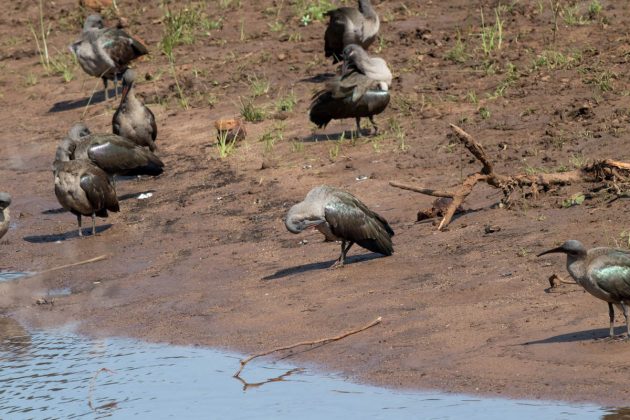
And there is an urban legend that the hadeda makes its grating call because it is terrified of flying (source). Some people will be able to relate to that.
To me, the Mosque Swallow looks a bit like an aging boxer that got into one or two fights too many. But then, neither the HBW nor eBird mention anything like this, so it would have been wiser of me to keep my initial impression to myself.
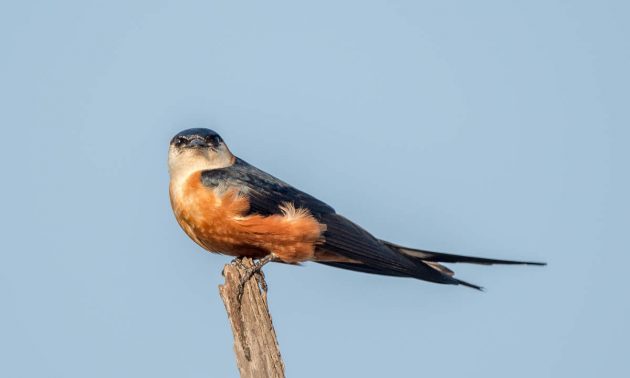
It is sometimes nesting in buildings, preferably uninhabited ones – I am not quite sure whether by bird standards mosques count as uninhabited.
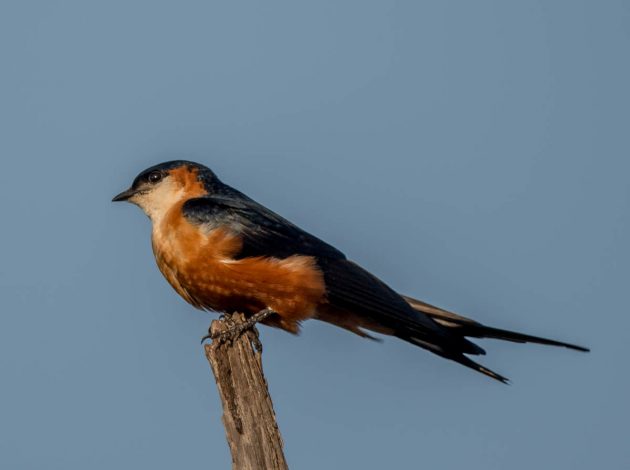
If these photos of an Orange-breasted Bush-Shrike were better, it would be easier to recognize them from the eBird description as “a striking gray, yellow, and green bushshrike”.
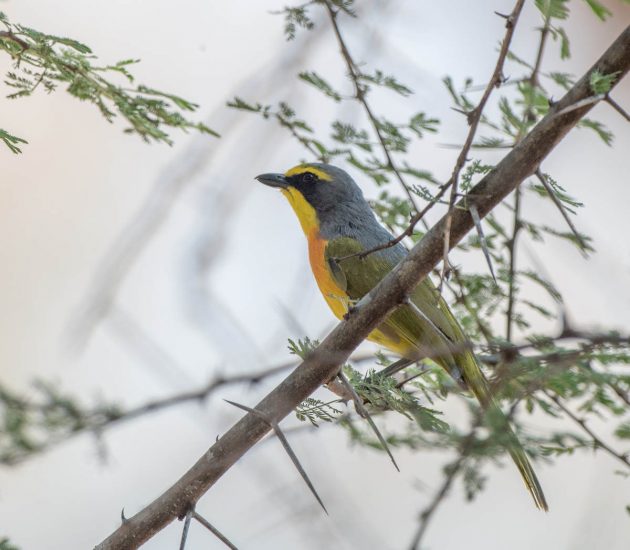
Apologies.
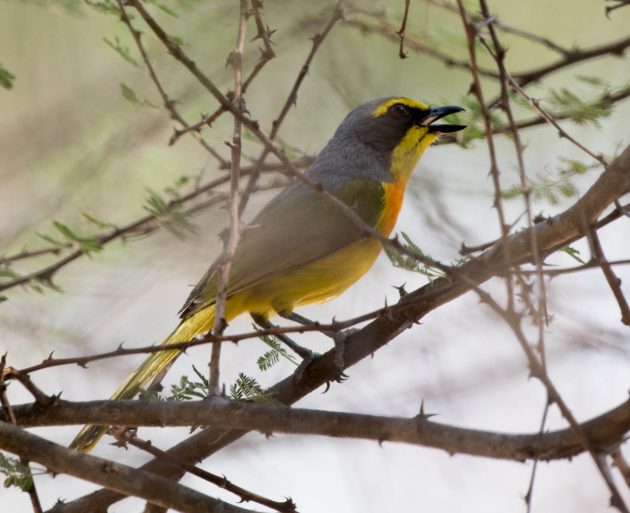
Not everybody likes birds. Some farmers probably hate them. Weavers – including the Red-headed Weaver – attack rice crops in Niger, the subject of the paper “Farmers’ Perceptions and Management Practices of Weaver Bird Pests in Niger State, Nigeria”.
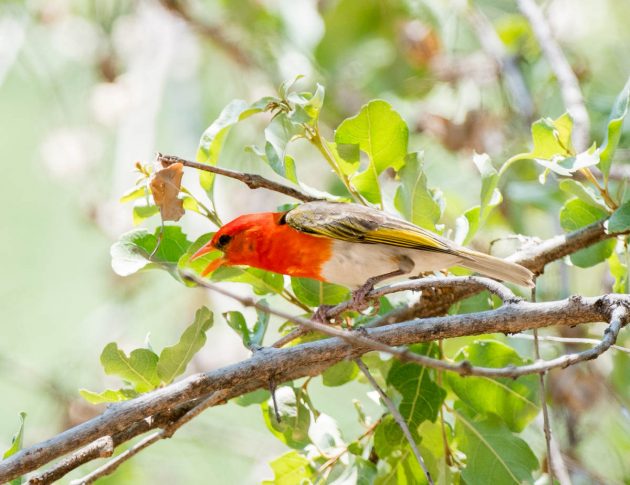
The Steppe Buzzard is often considered a subspecies of the common or Eurasian buzzard, but it differs somewhat physiologically. It is smaller than the common buzzard, but with longer wings and tail (source).
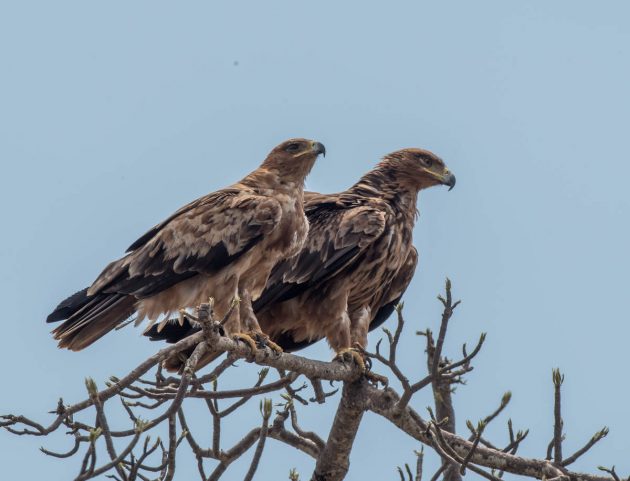
“When I grow up, I want to be a full species”.
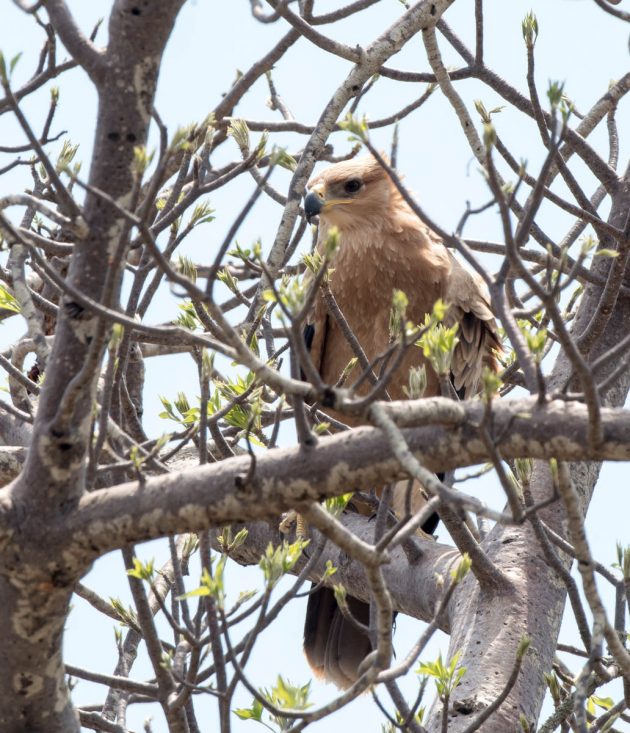
The White-crowned Lapwing is not particularly rare globally but rare in South Africa, where it is largely confined to the Kruger Park and the total population therein is suspected to number just c. 300 birds (HBW). This is one of them.
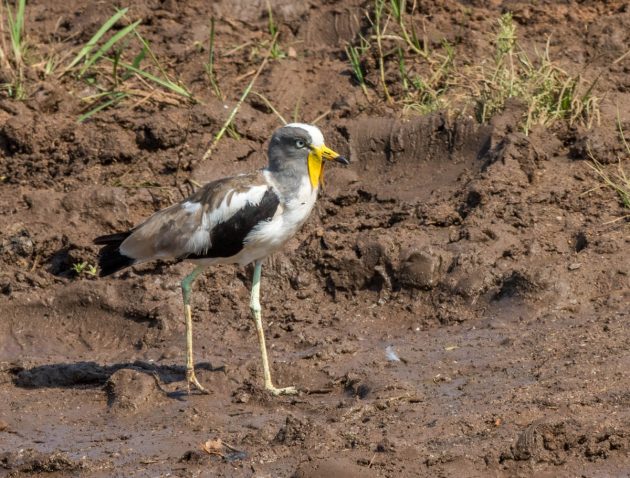
The eBird entry on the White-fronted Bee Eater is the first one I have seen that contains an exclamation mark: “They have one of the most complex of all avian societies, featuring families, clans, and pirates!”
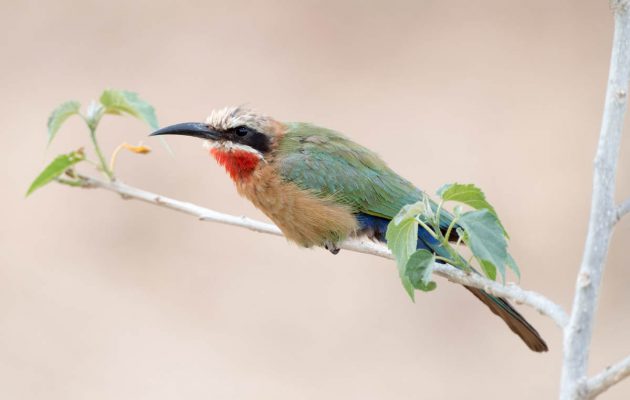
The HBW manages to say much the same, though without an exclamation mark: “Society arguably the most complex and best-studied of any avian species”.
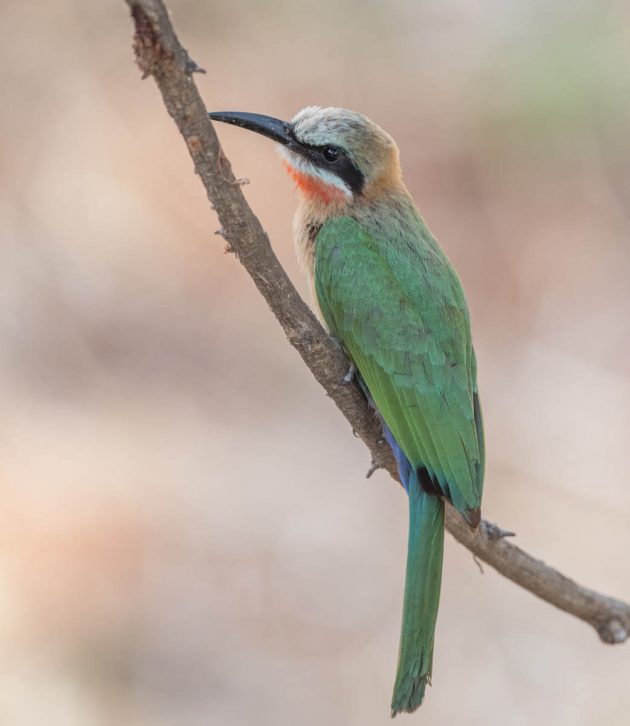
A few bits of gossip from the HBW:
“3–4 pairs with helpers comprise a clan, members of which are related and freely visit each other’s burrows, but repel attempts by non-members to enter burrows”
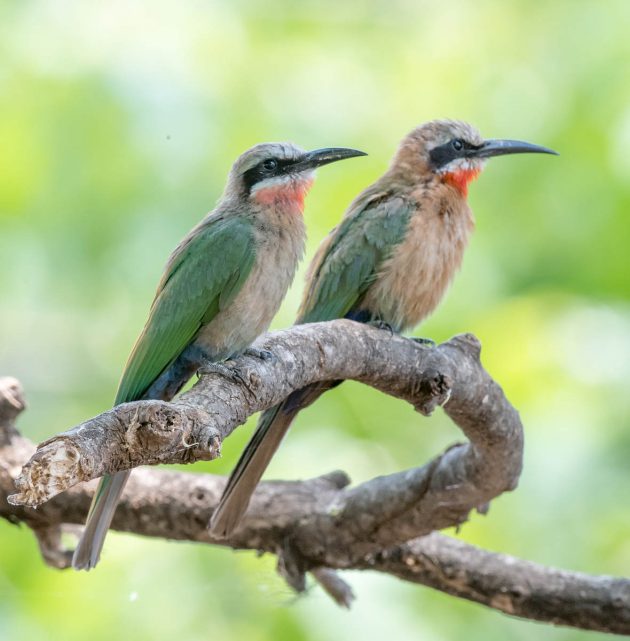
“Males spend better part of day at colony, protecting female from enforced copulation by other males”
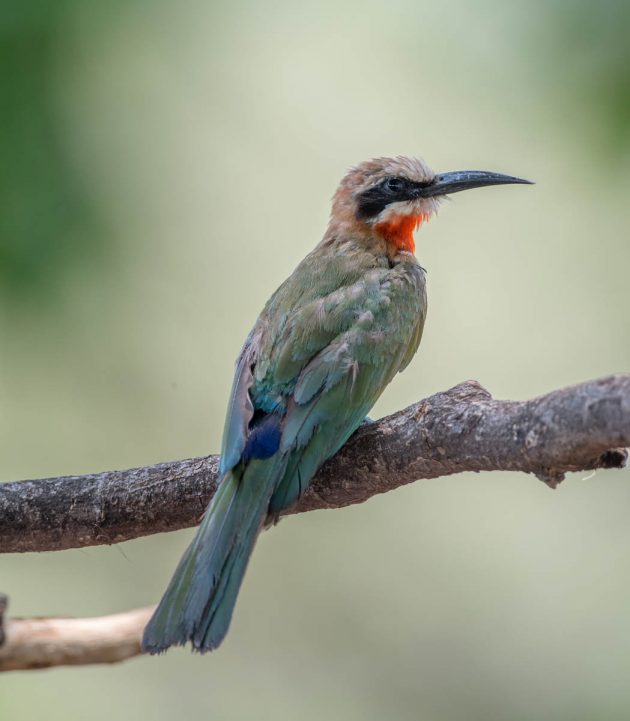
“To prevent being parasitized, female stays in her nest for most of daytime”
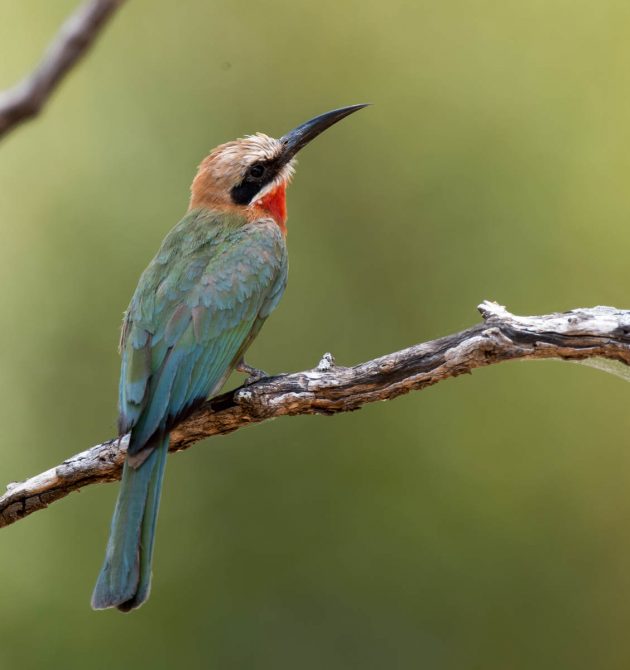
“Considerable parent-offspring conflict, and parents may interfere in their son’s nesting to recruit him as own helper”.
Well, it is not easy being (mostly) green.
While the park still suffers from an abundance of non-birds, at least some of them are already dead.
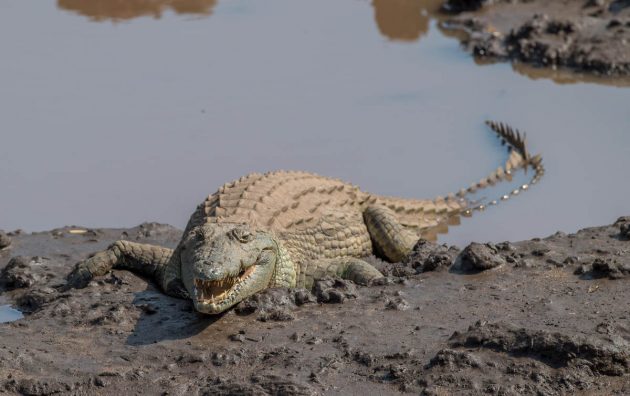
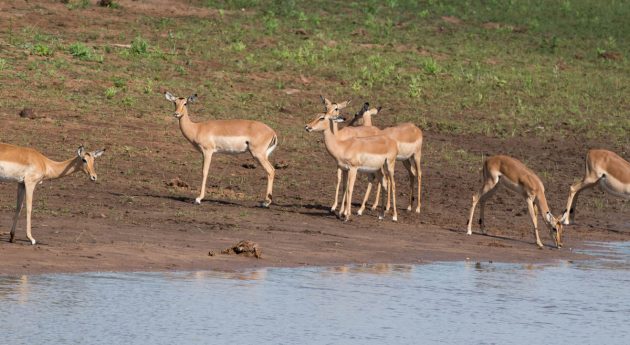
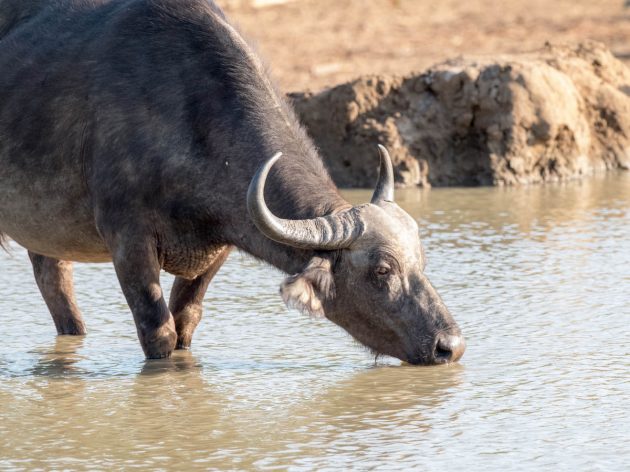
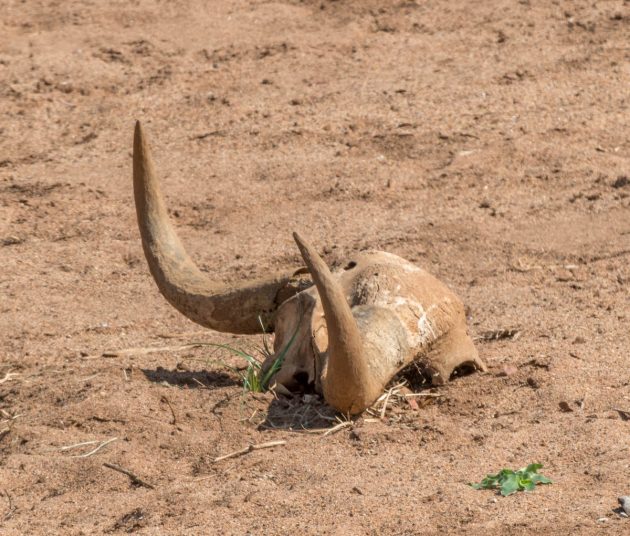











Leave a Comment